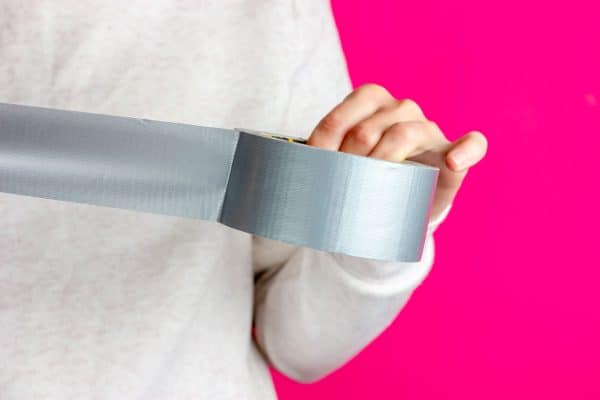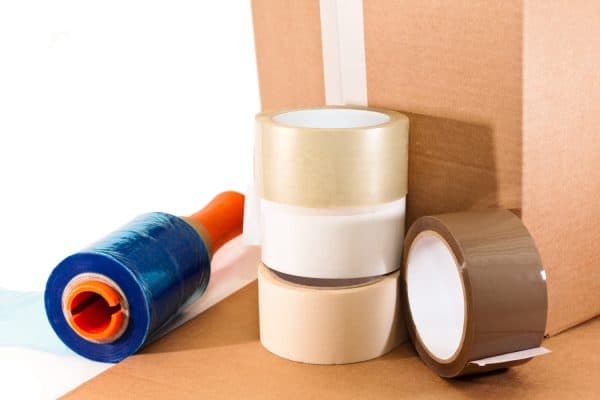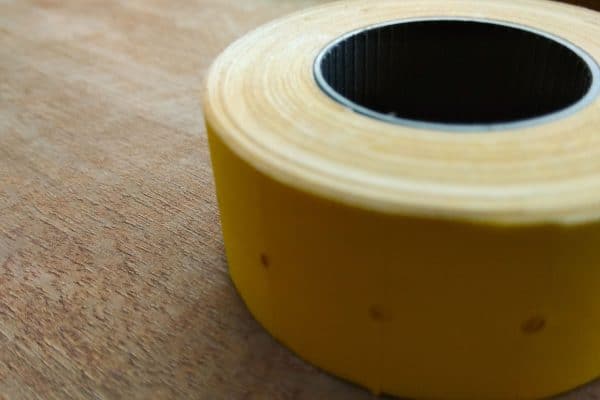If you didn't get the memo not to put packing tape directly on your furniture and valuables, chances are you're probably dealing with tape residue problems right now. We're here to help. We've asked the experts for tips on how to remove brown packing tape residue and here's what they have to say.
There are different ways to remove brown packing tape residue on different surfaces:
- through thermal,
- chemical,
- and mechanical approaches.
The method that you choose would depend on the material that you'll be working with. You need to be careful so that you won't damage the surface and still retain its good condition.
Continue reading to know more about these approaches and which one would be best to use when treating this residue on glass, wood, metal, plastic, and fabrics. We'll also answer if you can use rubbing alcohol and WD-40 to get rid of this gooey residue. Let's better get down to business!
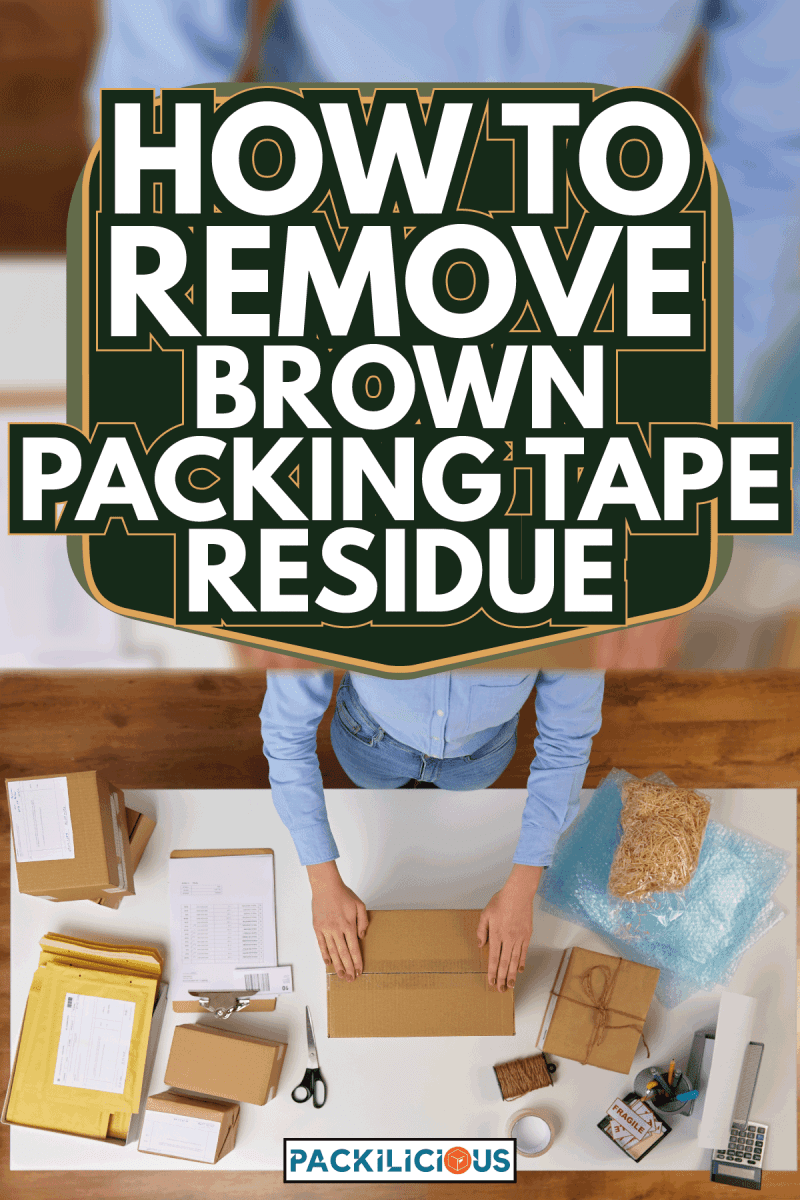
How to Remove Tape Residue After Moving
It is often taken for granted but packing tape has made our lives a lot easier. Can you imagine packing or wrapping your stuff without using tape? It would be such a hassle from the troubles you have to go through to secure your items for shipping to ensuring their safety from pickup to drop-off point.
A brown packing tape is so simple and yet it has made its mark as a packing essential. It is made of a thin layer of film that's coated with adhesives on its underside.
These adhesives are the main reason why they stick so well to different surfaces. That is how they ensure the safety and security of all the stuff that you want to store or transport from one place to another.
But the thing is, these adhesives are also bound to leave a residue on the surface of whichever material they are stuck to. That's why experts advise wrapping your items first and not putting tape directly on their surface.
Otherwise, the tape residue can be difficult to remove and if you don't have it taken off, it can leave an unsightly mark on the affected area. Aside from this, the sticky gooey substance is a magnet for dirt, dust, and debris that further makes the situation worse.
But don't despair if you have brown packing tape stuck on your treasured wooden table, delicate glassware, or favorite luxury designer blanket. It can be challenging to remove the adhesive residue but it can be done. And we're here to help you out!
However, there's no one-size-fits-all solution here. Since we're dealing with different materials here, you have to make sure that you choose an appropriate method so as not to damage the surface.
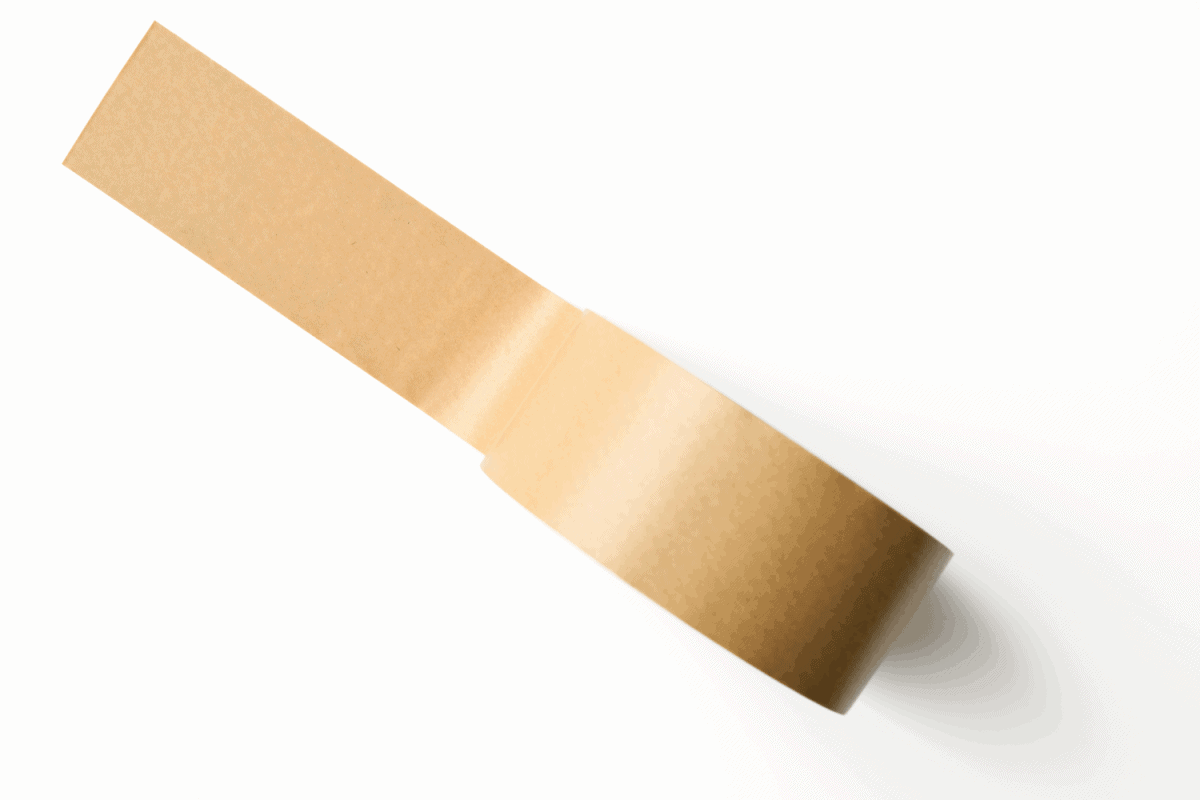
There are three different approaches to removing brown packing tape residue.
- Thermal Approach. One uses heat to weaken the adhesive bond.
- Chemical Approach. This involves the use of different substances that contain chemicals that can break down the adhesive components.
- Mechanical Approach. It uses old-fashioned tools to be able to scrape off the residue from the surface.
The method or approach you choose should be based on the material that you're working on. Some are delicate while some are resilient. You need to know how to deal with each particular material to avoid damaging its surface and restore its original condition.
That's why we'll specify here the different methods you can do to remove brown packing tape residue on the surfaces of specific materials.
How do you remove sticky tape residue from plastic?
Plastic is a durable material. But some chemicals can cause discoloration on plastics and it is also susceptible to scratches.
The best way to have the residue taken off is by soaking it in hot water mixed with dish soap. If the material is too big to fit in a bowl or your sink, get a microfiber cloth and soak it in the soapy water then place it over the affected surface.
The heat from the water will soften the gooey adhesive while the soap will help loosen its bond on the surface. Then you can gently remove the softened residue using a plastic scraper or soft-bristled brush to avoid scratching the surface.
Alternatively, you can also soak the residue in white vinegar, rubbing alcohol, or undiluted eucalyptus essential oil. These are also safe to use on plastics.
How do you get the brown tape off of wood?
Wood might be tough on the outside but it has a very delicate surface which is why you can't just use any cleansers that might contain harsh chemicals. Scratches can also ruin its look.
Wood is resilient to heat. That's why experts recommend the use of a hairdryer to soften the adhesive. This will make it easier for you to remove the gunk.
You can then use WD-40, olive oil, or cooking oil to remove the rest of the residue. A spatula or plastic scraper can make this task more convenient for you. You can wash off the surface with soapy water and towel it dry after.
For certain wood types, you can use ammonia, alcohol, or acetone. But it's best to test them first on an inconspicuous part of your furniture or fixture to know how it will affect the wooden surface.
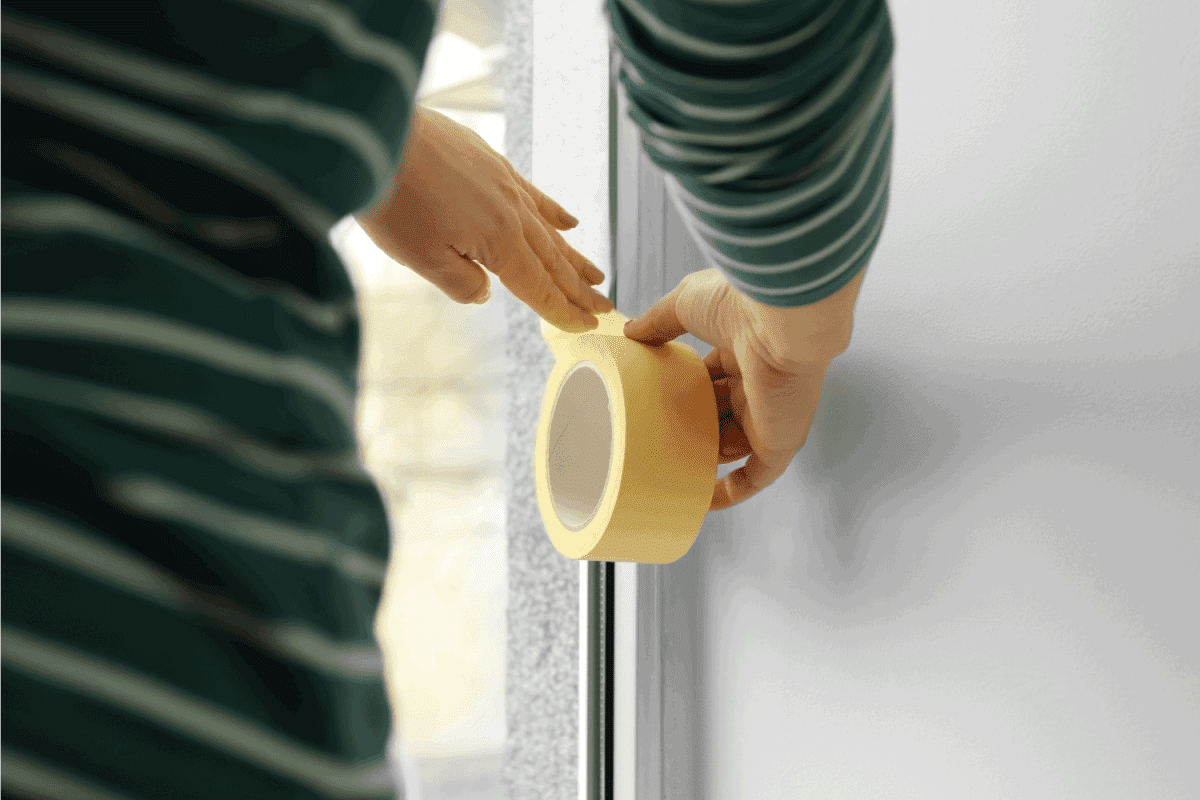
How do you remove adhesive from glass?
Glass is fragile when it comes to collision and impact. It is also prone to scratches. But this material is generally more robust when it comes to dealing with chemicals which is why you have a lot more options when it comes to products that you can use.
To take off the residue from brown packing tape, you can choose from the following:
- soapy water
- white vinegar
- lemon juice
- baking soda
- cooking oil
- food items with high oil-content such as peanut butter and mayonnaise
- rubbing alcohol
- nail polish remover
- paint thinner
- Goo Gone
- hairdryer
We weren't kidding when we said you have a lot of options, right? Except for hairdryer that'll soften the goeey substance, all the rest works by loosening the adhesive's bond on the glass surface.
You would need to soak the glassware in the product that you chose to use and let it work its magic. Once the gunk is loose, it is easy to take it off with the use of a plastic scraper or soft sponge so that it won't scratch the surface. Rinse everything off with soap and water.
How do you remove adhesive from fabric?
Fabric is a delicate material. Stubborn stains can ruin its look permanently.
The first step to remove the gunk from the fabric is to scrape off as much of the residue as you can. Then you do a spot cleaning using your favorite detergent. Gently rub the fabric. You can also use a dry cleaning solvent. Blot the affected surface until the fabric absorbs the solvent.
Find this fabric cleaner on Amazon.
If you still can't remove the residue stain, you can mix one tablespoon of white vinegar with one tablespoon of liquid handwash soap and two cups of warm water.
Use a sponge to apply this solution on the stained area. Scrub it with the sponge gently then rinse with water. Repeat until the stain disappears.
How do you remove adhesive from metal?
Metal has a strong exterior but it is also sensitive to strong chemicals. They can damage its surface further by causing discoloration, rusting, or degradation. Experts also warn against using products with abrasive properties as they would leave scratches or marks on the metal surface.
To get rid of the sticky residue, you can use vegetable oil, ammonia, and mineral spirits. Apply these on the surface and leave them there for a while. Give them time to loosen the bond on the surface. You can also use the hairdryer method to soften the residue.
If there's still some remaining gunk, you can use warm soapy water on the affected area. Then, rinse it off with water and wipe it dry.
Will rubbing alcohol remove tape residue?
Rubbing alcohol is one of most common household products. It has various uses aside from killing germs and bacteria that threaten to spread sickness in our homes.
One of its other helpful applications is in helping you get rid of the sticky residue on glass, plastic, and metal. Rubbing alcohol is mild enough to prevent damage to these materials.
Rubbing alcohol weakens the adhesion of the tape residue on the above-mentioned materials. You would need to wet your cotton balls or paper towel with alcohol and rub them against the tape residue.
If the gunk won't come off, you would need to soak the affected area in these products for a longer time. You can also apply pressure when rubbing since these materials are tough enough to handle the extra force.
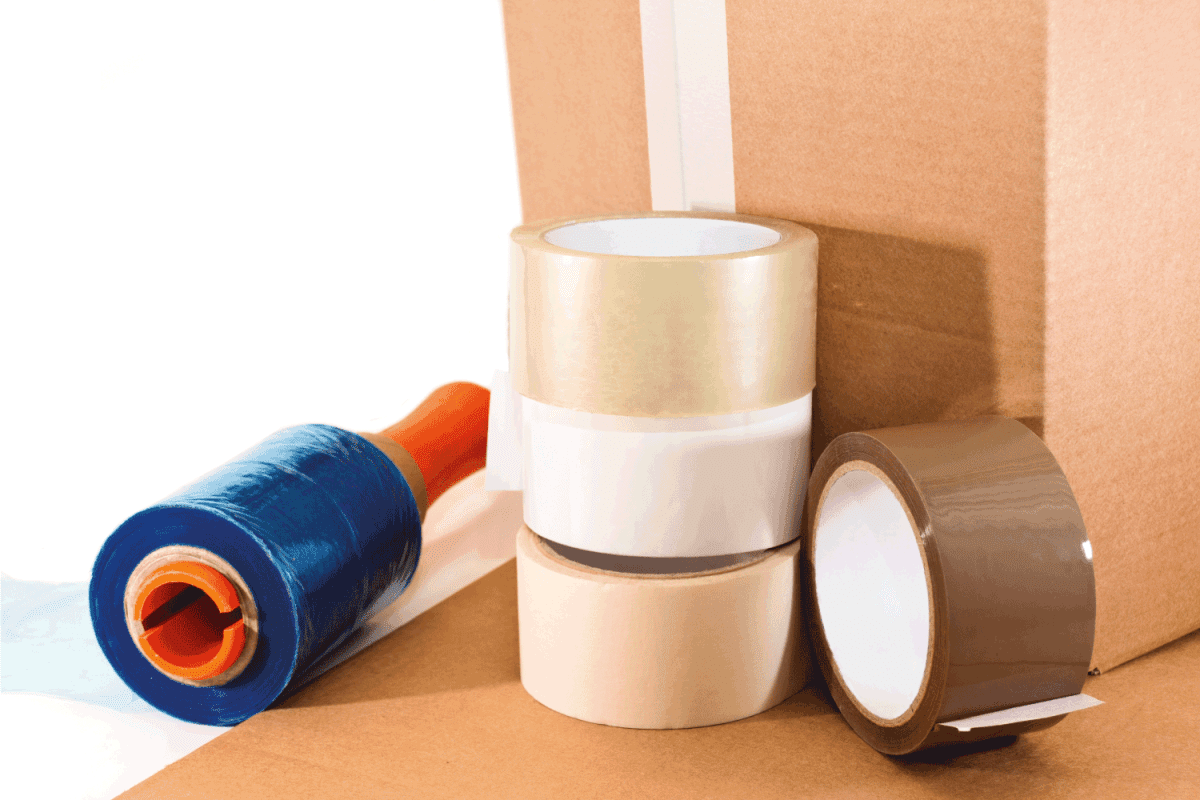
Does WD-40 remove adhesive?
WD-40 is another versatile product that you use at home. Aside from lubricating and protecting metals from rust and corrosion, it can also effectively remove adhesive residue on various surfaces.
Check out this product on Amazon.
WD-40 can break down the adhesive components so it would be easier for you to remove the gunk from the surface. However, it is not recommended to use this on fabrics and some plastic types.
This water-displacing spray can be used on wood and metal surfaces and won't damage their exterior. Spray some WD-40 on the tape residue, leave it there for some time so it can penetrate the adhesive. Then wipe the gunk off the surface using a clean piece of cloth or use a plastic scraper to remove it.

Final Thoughts
It's best to be informed about the proper way to treat stubborn tape residue on different surfaces. Each material requires careful handling so that you don't end up damaging the surface and it'll be back to its presentable form.
Check out these posts if you're preparing for your big move:



